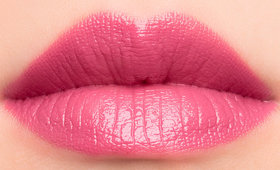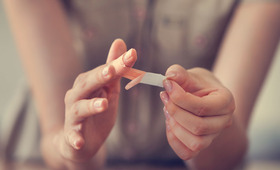
Summer and sunscreen go together like swimming pools and popsicles, if you ask us. A good sunscreen is key to preventing sunburn, skin cancer and those pesky signs of aging (wrinkles, fine lines and dark spots). If you’re planning on spending any time in the sun this summer, buying the right sunscreen is huge. But how do you choose the right one? Do they all work the same way? And what on earth does PA++++ mean?
Let’s simplify the search. It may seem confusing, but there are really only a few things to keep in mind when choosing a sunscreen.
Formula
Sunscreen comes in a variety of formulas, from lotions and BB creams to sprays and powders. The best sunscreen formula is the one that you can apply regularly. So, choose a formula that works for your routine and lifestyle. After all, you can buy the fanciest SPF 100+ sunscreen on the market, but if you hate how it looks and feels on your skin, you’re probably not going to apply as much as you need. The American Academy of Dermatology recommends that you use ¼ teaspoon to cover your entire face or 1 ounce (a full shot glass) to cover your body. It’s more than you’d think!
A note about SPF in makeup: Just because your foundation has SPF, doesn’t mean you can skip sunscreen. Most of us don’t apply ¼ teaspoon of foundation in even layers to our skin. Wear sunscreen in addition to your makeup to get the most protection.
Sunscreen Filters
The sunscreen ingredients that protect your skin from the damaging UV (ultraviolet) rays in sunlight are often broken into two categories: physical and chemical. Both physical and chemical UV filters work by absorbing UV energy from the sun and converting it into heat. There’s a lot of debate (as well as fear-mongering) about which type of filter is safer, but according to cosmetic chemist and skincare expert Stephen Ko, research hasn’t given us any definite answers so far. Some people do experience skin or eye irritation with certain filters, which is why it’s important to patch-test any sunscreen—physical or chemical—before use.
Here’s a list of common filters you might see when reading sunscreen labels:
-
Zinc oxide : physical
-
Titanium dioxide : physical
-
Octocrylene: chemical
-
Avobenzone : chemical
-
Octinoxate : chemical
-
Octisalate : chemical
-
Oxybenzone : chemical
-
Homosalate : chemical
-
Mexoryl SX or XL : chemical
-
Tinosorb S or M : chemical
Protection Rating
Another thing to consider when choosing a sunscreen is its protection rating. There are different ways to rate sunscreen’s level of protection against UV rays—which includes UVA (ultraviolet A) and UVB (ultraviolet B).
-
SPF (Sun Protection Factor): SPF measures the level of protection you’ll get from UVB rays, the kind of UV that causes sunburn. SPF indicates how long it will take for your skin to burn when exposed to the sun. Dermatologists recommend that you choose a sunscreen with SPF 30 or higher. Keep in mind that though higher SPF shields the skin from more of UVB rays, the protection only increases slightly as the SPF goes up. For example, SPF 50 only protects you from 1% more UVB than SPF 30!
-
PPD (Persistent Pigment Darkening): This is a measurement of protection you’ll get from UVA rays, the kind of UV that causes your skin to tan. It’s also the culprit behind skin aging and skin cancer. If you apply a sunscreen with a PPD of 10, it will take around 10 times longer for your skin to tan than if it was unprotected. Unfortunately, the PPD system isn’t very precise and can vary depending on the country or region.
-
PA (Protection Grade of UVA): Japan and South Korea use PA to rate UVA protection instead of PPD. It’s even less exact than PPD, because it groups PPD ratings into ranges: PA+ equals a PPD of 2 to less than 4, PA++ equals a PPD of 4 to 8, PA+++ equals a PPD of 8 to 16, and PA++++ covers all sunscreens with a PPD of 16 or more.
Unfortunately, PA and PPD systems aren’t widely used in the United States yet. Instead, there’s just one label for U.S. sunscreens that protect against UVA and UVB: broad spectrum. But just seeing “broad spectrum” on your sunscreen’s label doesn’t mean much. If a sunscreen provides any UVA protection at all, it earns a broad spectrum rating from the FDA. Still, it’s always better to choose a sunscreen with broad-spectrum protection.
So, next time you’re scanning the sunscreen aisle, look for sunscreen that offers broad-spectrum protection with an SPF of 30 (or higher!) and one or more of the filters listed above. Mineral or chemical, lotion or spray, your sunscreen choice is up to you—the most important thing is to find a formula that you like enough to happily apply every day.
Feeling more confident about sunscreen shopping? Explore our sunscreen collection and find your summer skin saver.
You Might Also Like
-

Beautylish Recommends
Where Lipstick and Lip Balm Meet
- 483
-

Skincare
Scar Care That Really Works
- 369
-

Skincare
What Are Those Bumps on Your Arms?
- 354
-

Skincare
Why I’ve Ditched ALL My Facial Oils for This One
- 8
-

Self-Tanners
5 Sunless Tanners to Keep Your Summer Glow Going
- 630
-

Ingredient Spotlight
Is Collagen the Key to Better Skin?
- 4







